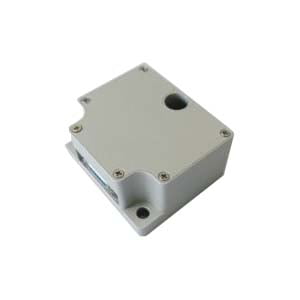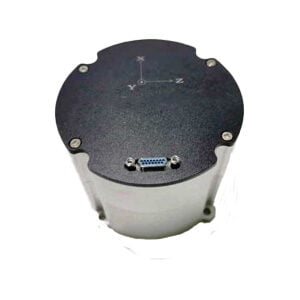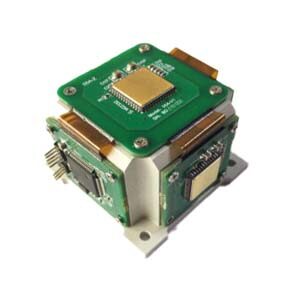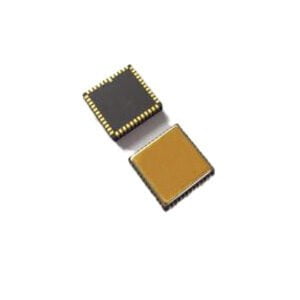Nowadays, with the development of chip, artificial intelligence and big data technology, UAV has begun the trend of intelligence, terminal and clustering. A large number of professional talents in automation, mechanical electronics, information engineering and microelectronics have been invested in UAV research and development. In a few years, UAVs have flown from military applications far away from people's vision to ordinary people's homes. It is undeniable that the development of flight control technology is the biggest driver of UAV changes in this decade.
Flight control is the abbreviation of flight control system, which can be regarded as the brain of aircraft. The flight control system is mainly used for flight attitude control and navigation. For flight control, it is necessary to know the current status of the aircraft, such as three-dimensional position, three-dimensional velocity, three-dimensional acceleration, three-axis angle and three-axis angular velocity. There are 15 states in total. The current flight control system uses an IMU, also known as inertial measurement unit, which is composed of three-axis gyroscope, three-axis accelerometer, three-axis geomagnetic sensor and barometer. So what is a three-axis gyroscope, a three-axis accelerometer, a three-axis geomagnetic sensor, and a barometer? What role do they play in the aircraft? What are the three axes?
The three axes of the three-axis gyroscope, three-axis accelerometer and three-axis geomagnetic sensor refer to the left and right of the aircraft, and the vertical up and down in the front and back directions, which are generally represented by XYZ. The left and right directions in the aircraft are called roll, the front and rear directions in the aircraft are called pitch, and the vertical direction is the Z axis. It is difficult for a gyroscope to stand on the ground when it does not rotate. Only when it rotates, it will stand on the ground. This is the gyro effect. According to the gyro effect, smart people invented a gyroscope. The earliest gyroscope was a high-speed rotating gyroscope, which was fixed in a frame through three flexible axes. No matter how the outer frame rotates, the high-speed rotating gyroscope in the middle always maintains a posture. The data such as the degree of rotation of the external frame can be calculated through the sensors on the three axes.
Because of its high cost and complex mechanical structure, it is now replaced by the electronic gyroscope. The advantages of the electronic gyroscope are low cost, small size and light weight, only a few grams, and its stability and accuracy are higher than those of the mechanical gyroscope. Speaking of this, you will understand the role of gyroscope in flight control. It is used to measure the inclination of the three XYZ axes.
So what does the three-axis accelerometer do? It was just said that the three-axis gyroscope is the three axes of XYZ. Now it goes without saying that the three-axis accelerometer is also the three axes of XYZ. When we start driving, we will feel a thrust behind us. This thrust is acceleration. Acceleration is the ratio of speed change to the time of occurrence of this change. It is a physical quantity describing the speed of object change. Every second power of meter. For example, when a car is stopped, its acceleration is 0. After starting, it takes 10 seconds from 0 meters per second to 10 meters per second. This is the acceleration of the car, If the vehicle travels at a speed of 10 meters per second, its acceleration is 0. Similarly, if it decelerates for 10 seconds, from 10 meters per second to 5 meters per second, its acceleration is negative. The three-axis accelerometer is used to measure the acceleration of the three axes of the aircraft XYZ.
Our daily travel is based on landmarks or memories to find our own direction. The geomagnetic sensor is a geomagnetic sensor, which is an electronic compass. It can let the aircraft know its flight direction, nose direction, and find the position of the mission and home. The barometer is used to measure the atmospheric pressure at the current position. It is known that the higher the altitude, the lower the pressure. This is why people have plateau reactions after arriving at the plateau. The barometer obtains the current altitude by measuring the pressure at different positions and calculating the pressure difference. This is the whole IMU inertial measurement unit. It plays a role in the aircraft to sense the change of the aircraft attitude, such as whether the aircraft is currently leaning forward or left and right, What is the role of the most basic attitude data, such as nose orientation and altitude, in flight control?
The most basic function of flight control is to control the balance of an aircraft when flying in the air, which is measured by IMU, sense the current inclination data of the aircraft and compile it into an electronic signal through the compiler. The signal is transmitted to the microcontroller inside the flight control through the new time of the signal. The microcontroller is responsible for the calculation. According to the current data of the aircraft, it calculates a compensation direction and angle, and then compiles the compensation data into an electronic signal, It is transmitted to the steering gear or motor. The motor or steering gear is executing the command to complete the compensation action. Then the sensor senses that the aircraft is stable, and sends the real-time data to the microcontroller again. The microcontroller will stop the compensation signal, which forms a cycle. Most flight controls are basically 10HZ internal cycles, that is, 10 refreshes per second.
This is the most basic function application of IMU in the flight control system. Without this function, once an angle is tilted, the aircraft will quickly lose balance and cause a crash.
Ericco's MEMS IMU ER-MIMU-03 and ER-MIMU-04, ER-MIMU-07 and ER-MIMU-08 have built-in high-precision advanced MEMS gyroscopes and high-performance accelerometers, which can measure linear acceleration and angular velocity of rotation from three directions, and obtain carrier attitude, velocity and displacement information through analysis. They are specially designed for high-performance applications of inertial navigation equipment such as UAV flight control. Provides excellent stability in the temperature range of - 45° C to 80° C. The advanced gyro sensor design suppresses the linear acceleration effect of shock and vibration, enabling ER-MIMU-04, ER-MIMU-07 and ER-MIMU-08 to operate in harsh environments.
In addition to the application of ERICCO's MEMS products in UAVs, its popularity in oil drilling, mining and other application markets is also growing. MEMS technology is developing into a huge industry. Just like the great changes brought to mankind by the microelectronics industry and computer industry in the past 20 years, MEMS has also bred a profound technological change, which has had a new round of impact on human society.
More Technical Questions
1.Research Background and Current Status of MEMS IMU
2.What are the advantages of MEMS IMU?
3.Internal Structure Analysis of IMU
4.Application of MEMS IMU in Automobile
5.What are the Application Scenarios of the IMU?
6.IMU Based on MEMS Technology
Products in Article







